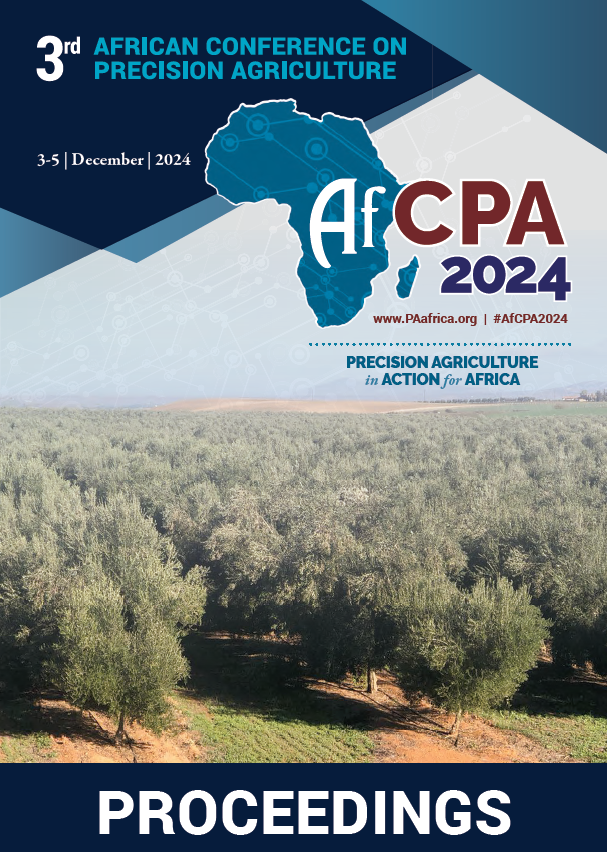Download the Conference Proceedings
Proceedings
Authors
| Filter results3 paper(s) found. |
|---|
1. SmartAfriHub for SmartAgriculture capacity buidling in AfricaDigital Innovation Hubs (DIH) are multi-actor ecosystems that support farming communities in their digital transformation by providing a broad variety of services from a one-stop shop. DIHs purpose is to provide a social space for community of practices; provide access to digital technologies and competencies; provide access to infrastructure and tests digital innovations (“test before invest”); provide development playground... K. Charvat, C. Miderho , A. Obot, T. Löytty, H. Kubickova |
2. Photogrammetrically Assessed Smallholder Pineapple Fields in Ghana Using Small Unmanned Aircraft SystemsUltra-high-resolution imagery taken by small unmanned aircraft systems (sUAS, drones) has been proven beneficial for the monitoring of agricultural crops in conventional farming especially in the context of precision farming. For smallholder pineapple cultivation, the use of sUAS imagery is still sparsely evaluated. However, technical developments in low cost sUAS-sensor combinations make assessments of agricultural areas by service providers more and more affordable for Africa. In this study,... M. Hobart, E. Anin-adjei, E. Hanyabui, G. Badu-marfo, M. Schirrmann, N. Schiller |
3. Optimizing Maize Production Through Minimum Tillage in Conservation Agriculture Systems: Evidence from Malawi's LowlandsSustainable intensification in agricultural systems has been implemented and promoted across Sub-Saharan Africa (SSA) as a strategy for addressing low crop productivity often resulting in widespread food and nutritional insecurity. This study sought to assess the productivity potential of conservation agriculture (CA) cropping systems and associated crop establishment techniques in terms of grain, protein and energy yield. An on-station trial was implemented at Chitala Research Station in Malawi... D. Nyamayevu, I. Nyagumbo, W. Liang , R. Li |
